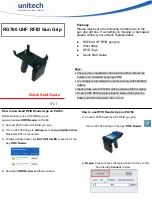
❏
Perforated originals
❏
Original with labels or stickers
❏
Carbon-less paper
❏
Curled originals
❏
Coated paper
c
Important:
Carbon-less paper contains chemical substances that may harm the rollers. If you scan carbon-less paper, clean the
pickup roller and the separation roller regularly. Also, scanning carbon-less paper may shorten the life cycle of the
rollers faster than scanning plain paper.
Note:
❏
Crinkled originals may scan better if you slow down the feeding speed during scanning or smooth out the crinkles before
loading.
❏
To scan delicate originals or originals that are easily crinkled, use the Carrier Sheet (sold separately).
❏
To scan originals that are incorrectly detected as double feeds, set the
DFDS Function
to
On
on the control panel before
you resume scanning, or select
Off
in
Detect Double Feed
on the
Main Settings
tab in the Epson Scan 2 window. When
you are using Document Capture Pro, you can open the window by pressing the
Detailed Settings
button on the
Scan
Settings
screen.
❏
Labels or stickers must be firmly stuck to the originals with no glue protruding.
❏
Try to flatten the curled originals before scanning.
Related Information
&
&
Types of Originals that Must Not be Scanned
The following types of originals must not be scanned.
❏
Photos
❏
Booklets
❏
Non-paper original (such as clear files, fabric, and metal foil)
❏
Originals with staples or paper clips
❏
Originals with glue attached
❏
Ripped originals
❏
Heavily wrinkled or curled originals
❏
Transparent originals such as OHP film
❏
Originals with carbon paper on the back
❏
Originals with wet ink
❏
Originals with sticky notes attached
User's Guide
Specifications of Originals and Placing Originals
25
















































